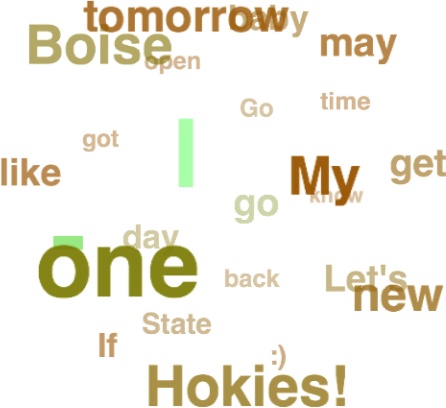Closing Remarks
You can literally do just about anything social that you can imagine on Facebook, and the vast amounts of data that it exposes through powerful APIs provide huge opportunities for creating smart and amazing data-driven applications. The cursory treatment weâve given the Facebook platform in this chapter doesnât even scratch the surface of the possibilities, but it hopefully has given you a lot of tools that you can use to dig deeper and perhaps become the creator of the next great (data-driven) Facebook app.
As a further exercise, you could consider visualizing the unstructured text on your friendsâ walls or group walls with a tag cloud, but applying the kinds of entity-centric analytics that were introduced in Chapter 8 instead of using the trivial tokenization scheme we used in this chapter. It could also be interesting to dig into the structured data available via the Graph API to discover the chattiest person in your network based on the number of overall statuses or comments that your friends post. Another great idea would be to try to cluster your friends based on what they Like, and then analyze those preferences in a pivot table or graph them.

Figure 9-9. A rotating tag cloud thatâs highly customizable and requires very little effort to get up and running
Get Mining the Social Web now with the O’Reilly learning platform.
O’Reilly members experience books, live events, courses curated by job role, and more from O’Reilly and nearly 200 top publishers.

